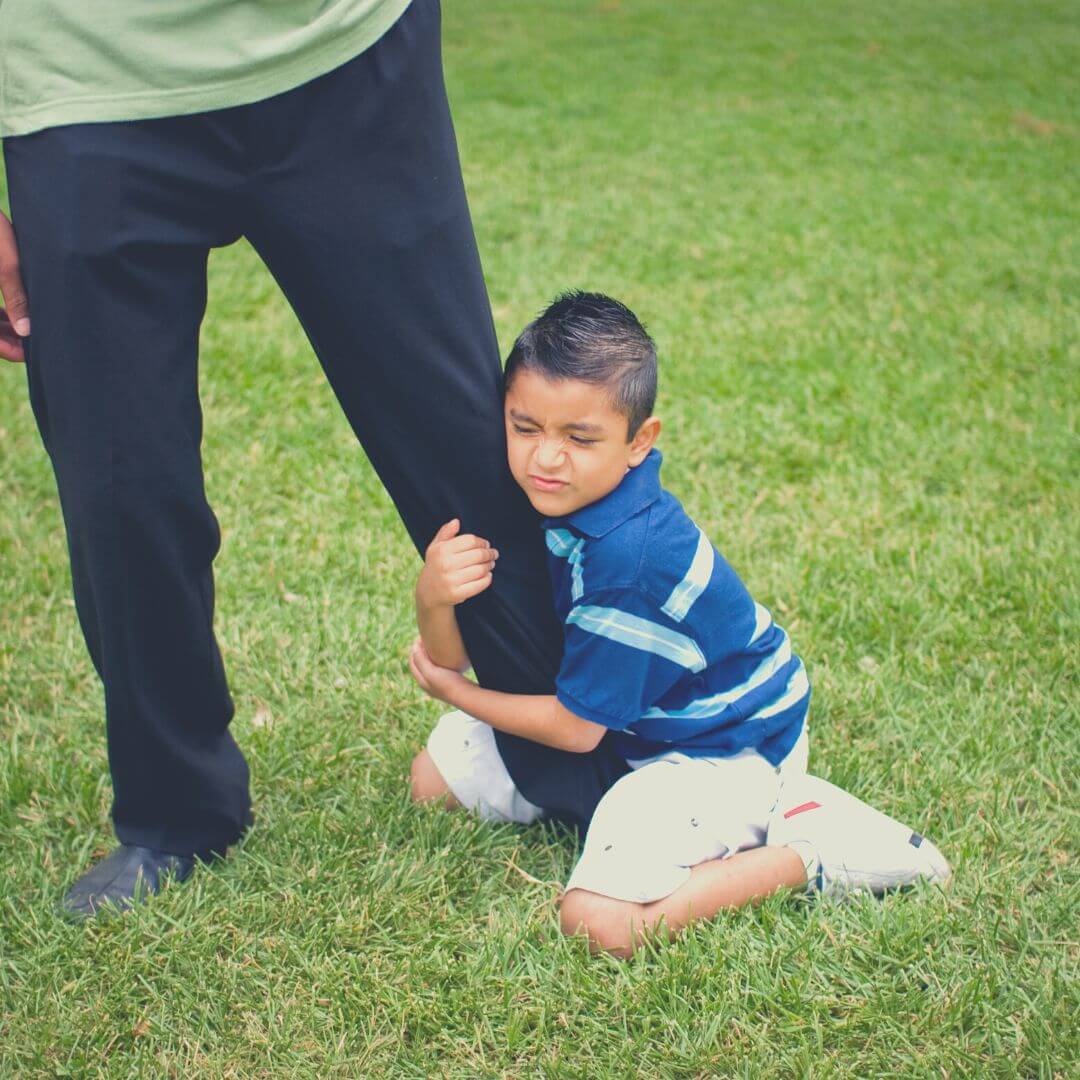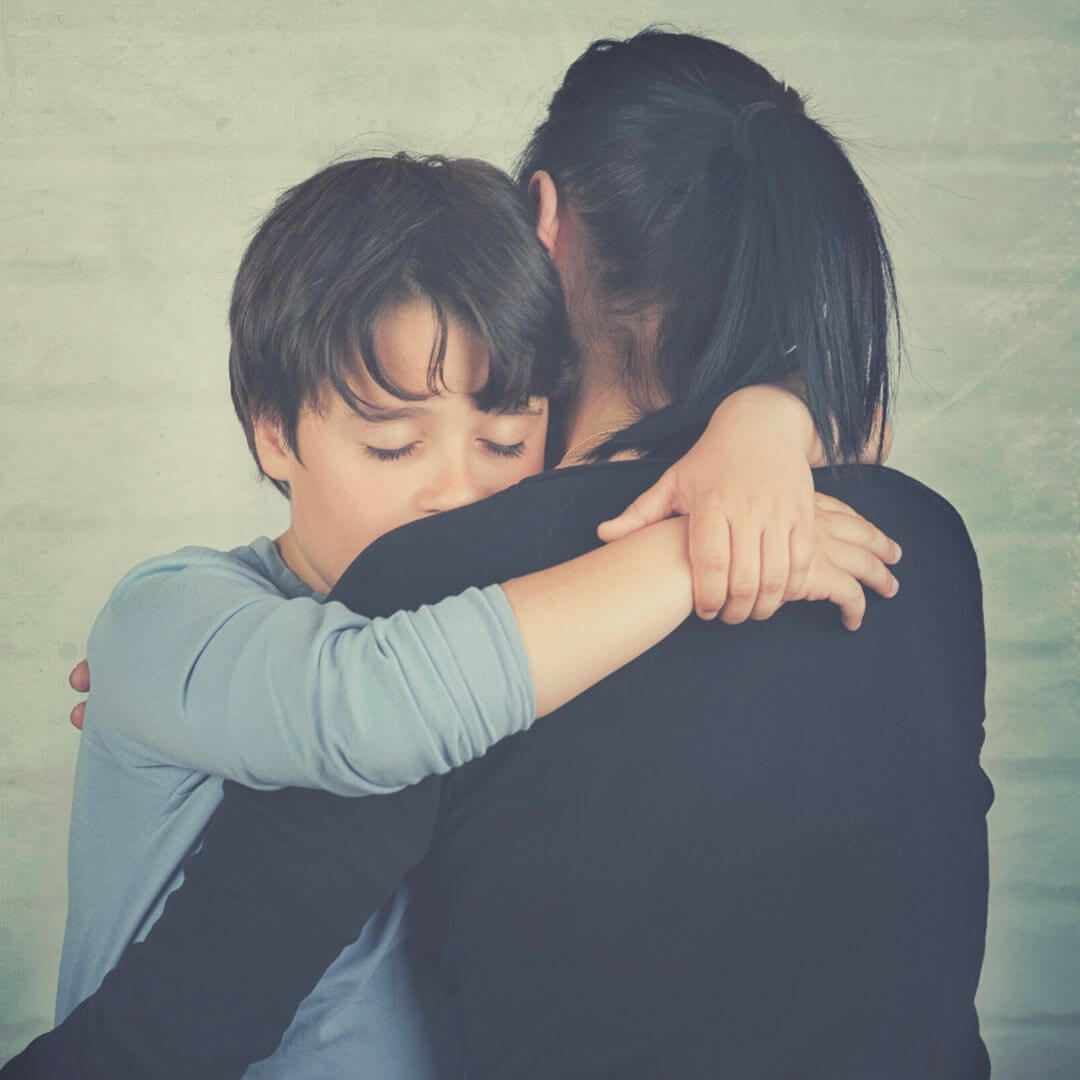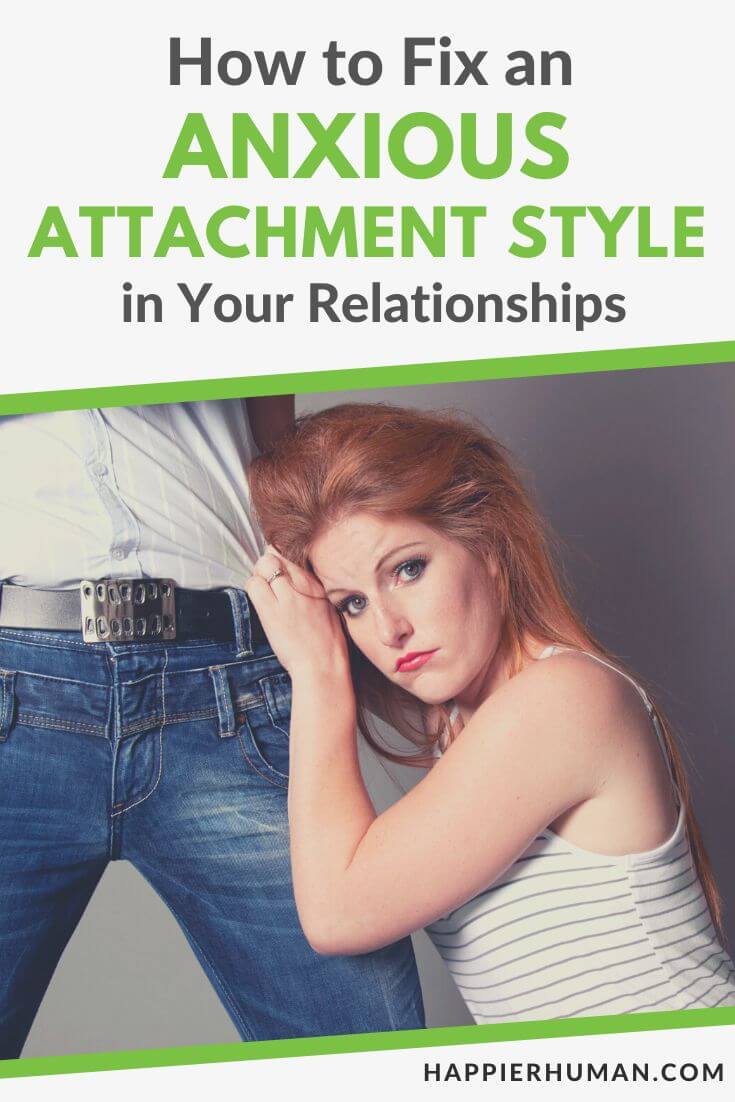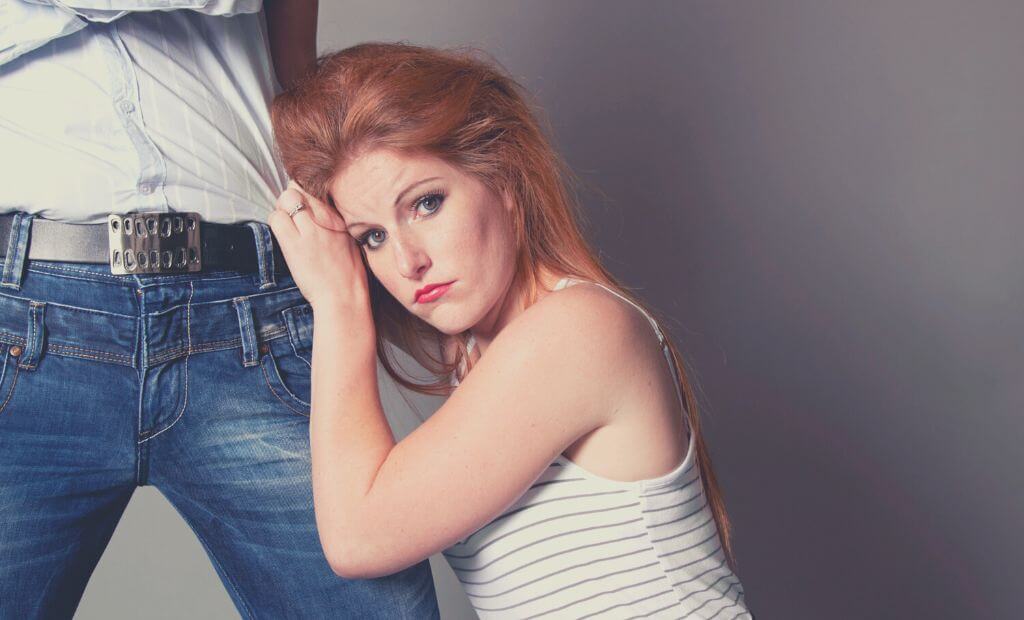There might be affiliate links on this page, which means we get a small commission of anything you buy. As an Amazon Associate we earn from qualifying purchases. Please do your own research before making any online purchase.
Our relationship with our caregivers is the foundation on which we build all future relationships.
How our parents and grandparents respond to our emotional needs dictates how we relate to attachment, emotional security, and rejection.
When you grow up in a family environment characterized by abandonment, trauma, or inconsistent parenting, you develop a deep sense of anxiety about any form of emotional closeness and security.
On the one hand, you crave intimacy and emotional connection.
On the other hand, the thought of losing it (or not getting it consistently) is terrifying enough to keep you tense and hypervigilant whenever someone offers you closeness and emotional comfort.
Experts call it `anxious attachment style`, one of the four attachment styles that characterize human relationships.
A Quick Dive into Attachment Theory
In essence, attachment refers to an emotional bond between two people that involves an exchange of intimacy, affection, and care.
The ways we interact and behave in relationships are determined by different attachment styles, cultivated since childhood, based on the parent-child relationship.
Attachment theory was first developed in the ‘50s by John Bowlby, a British psychoanalyst who set out to understand the anxiety and suffering children experience when separated from their parents.
In his view, attachment plays a crucial evolutionary role, as the child’s survival depends entirely on the care and protection of the adult.
As John Bowlby said, the propensity to make strong emotional bonds to particular individuals is a basic component of human nature.

Today, we know that attachment dictates how we cope with emotions. More precisely, people with an anxious attachment style will most likely find it challenging to identify their feelings and control their emotional impulses.
So, what happens when we’re having difficulties navigating our emotions?
What happens when we cannot forge solid emotional bonds with the people close to us?
What are the consequences when the love and emotional support we should have received from our caregivers is inconsistent, conditioned, or absent?
Anxious Attachment Style: An Overview
As a rule, every child has a set of needs (physiological and emotional) that make him completely dependent on his caregivers.
For instance, being fed is equivalent to being loved during the first months of life.
But as the child grows, biological needs related to food are present along with other basic needs like being loved, nurtured, desired, and accepted for what they are.
This is why unconditional love and support during childhood are the foundation for a happy and fulfilled life.
The safer a child feels around the parent who provides support, protection, and reassurance, the more secure the attachment to that parent.
Anxious attachment style has its roots in early childhood and results from uncertain and everchanging parent-child dynamics.
Children who develop an anxious attachment style experience a strong desire to feel wanted, are constantly looking for a sense of security, and often cling to their parents.
What Happens When Your Caregivers’ Presence Was Inconsistent?
You will eventually grow into an adult who spends a lot of time thinking about your relationship; an adult who’s jealous or idolizes his life partner.
Your constant need for reassurance puts you ‘on guard’ and makes you overthink every slight change in the dynamics of the relationship.
In other words, when you’re dealing with an anxious attachment style, you tend to doubt your partner because the mere thought of being abandoned is enough to trigger intense anxiety.
Whenever you feel insecure about your partner’s feelings or the well-being of your relationship, you become demanding, restless, or possessive.
For instance, you might want to check your partner’s phone or demand him to share his location and other details about the people he’s meeting.
All these attempts to take control of the relationship are fueled by fear of abandonment and an ‘emotional hunger’ that you hope to satisfy by clinging to your life partner.
The same emotions you’ve experienced whenever your parents left (and you didn’t know when they’ll return) resurface every time your significant other leaves drinks with their friends or on a business trip.
What Are the Roots of Anxious Attachment Style?
Although attachment style is primarily rooted in the mother-child relationship, particular genes partially explain attachment insecurities.
In other words, some genes responsible for emotions and social behavior may set the biological foundation for insecure attachment, but only when environmental factors (e.g., inconsistent parenting styles or abandonment trauma) are in play.
And since we’re on the topic of biology, you should also know that people with anxious attachment styles show greater cortisol reactivity.
What we can draw from this finding is that when you’re dealing with anxious attachment, you’re inevitably dealing with a lot of stress which puts you at risk of developing all sorts of health-related problems.
Factors that contribute to an anxious attachment style:
As you can see, it’s almost impossible to reduce the cause of anxious attachment style to one particular factor or event.
Looking at your past, you’ll probably discover that your attachment problems have manifested in almost every significant relationship.
Although it started with your caregivers, the pattern has most likely influenced your romantic relationships in adolescence and early adulthood.
To make this self-discovery exercise easier, let me share some telltale signs of anxious attachment style.
The 5 Signs of Anxious Attachment Style
1. You Need Constant Reassurance
When you’re anxiously attached, you’re torn between the need to experience love, protection, and security and the fear that you’ll somehow lose the person fulfilling those needs.
As a result, you seek constant reassurance from your significant other to the point where they might feel frustrated and exhausted.
2. You Get Clingy and Demanding
Every moment spent away from your life partner feels uncomfortable, so you try to be around them as often and as much as possible.
You might want to move in together after just a couple of weeks or feel anxious every time they leave for a couple of days.
When they’re away, you keep buzzing them with texts and voice messages to feel constantly connected and avoid feelings of loneliness or abandonment.
3. You Are Afraid of Emotional Intimacy
Despite wanting to spend as much time together as possible, you somehow feel disconnected
You crave your significant other’s presence, but you also keep them at a distance (emotionally).

To justify this fear of intimacy, you may label gestures of affection as ‘lame,’ ‘cringe,’ or ‘cheesy.’
Aside from not letting yourself enjoy a moment of intimacy, you feel uncomfortable when your significant other is emotionally vulnerable.
4. You Feel Like Running Away Every Time Someone Gets Emotionally Attached to You
Sometimes, your anxious attachment style can be so severe that it prevents you from starting a committed relationship.
Since you have no problem with physical intimacy, casual dating and hookups become a replacement for emotional intimacy.
But when your casual partner starts catching feelings, you may keep him at a distance, end the relationship, or ghost him.
5. You Keep Telling Yourself that You’re Independent and Don’t Need Anyone
This is one of the most common excuses people with anxious attachment styles use to justify their fear of abandonment.
It’s easier to tell yourself that you’re independent and self-sufficient than to “look behind the curtain” and see if there are other reasons why you might be keeping others at a distance.
On a different note, hyper-independence can also be a sign of unresolved trauma.
Remember these signs when you think about your past relationships and how your attachment style has influenced your choices.
Can My Attachment Style Change?
In general, it’s easier to raise a healthy child than to repair a dysfunctional adult.
The family environment in which the child develops must provide security, love, emotional warmth, protection, and support throughout all stages of development.
More specifically, the child-caregiver relationship must be based on that ‘emotional attunement’, which leaves a mark on the child’s personality and the adult he’ll become.
Unfortunately, not everyone is blessed with a kind, stable, and nurturing family environment.
Whenever I talk with my clients about unhealthy attachment styles, the questions I get most often are: “Is it too late to fix this problem?” and “What can I do to overcome my unhealthy attachment style?”
Although your attachment style is a deeply rooted aspect of your personality, there’s still plenty of room for change and growth.
But to cultivate a healthy attachment style, you must reflect deeply on how old attachment patterns influence the present and strive to change how you think and behave in relationships.
It’s a long and sometimes painful journey, but it’s worth all the effort as it’s the only way to overcome your anxiety and build lasting romantic relationships.
How to Deal with Anxious Attachment Style
As I pointed out earlier, your attachment style can change and adjust over time.
Once you discover the root of your anxiety and the defense mechanisms you’ve used in your past relationships, you can focus on new ways to approach relationships so that you will develop a more secure attachment in time.
Individual Therapy
The most effective way to work on your attachment issues is with the help of a licensed professional.
When addressing your childhood issues in a therapeutic setting, the counsellor or therapist will take on the role of caregiver, providing a safe and secure interaction.
Your therapist's stable and healthy presence in every session is what your inner child needs to express freely and feel safe enough to ask for what they want (emotionally).
Furthermore, it’s one thing to contemplate your past by yourself; it’s another thing to explore your childhood under the guidance of a professional who can show you where to look and what to look for.
Since you can’t stay in therapy forever, it’s also essential to work with ‘the adult.’
That means learning to take care of your inner child’s needs and develop healthy coping skills to help you manage your attachment issues.
In a nutshell, a therapeutic process provides a safe space where you can address sensitive topics, offers an example of a stable human relationship, and promotes healthy ways to cope with anxiety and abandonment issues.
Couples Therapy
You might not realize you’re dealing with an anxious attachment style until you are in a committed relationship.
The moment you start falling in love with your partner and inevitably begin to invest (emotionally) in the relationship is usually when your anxious attachment style becomes problematic.
But this doesn’t mean you’re not a good fit for each other; it just means you need to work a little harder on adjusting the dynamics of the relationship.
Couples therapy or marriage counselling is an excellent way to address this problem.
Given that each person has their attachment style, every relationship is unique in structure, dynamics, the intensity of interactions and evolution over time.
A wrong combination of attachment styles can cause stress, anxiety, and doubt for both partners.
In time, the clinginess, constant need for reassurance, and fear of emotional intimacy that people with anxious attachment styles bring to the table can lead to separation or divorce.

The main goal of couples therapy is to cultivate and strengthen the emotional connection between partners by identifying and highlighting the critical elements of a lasting relationship.
To achieve this goal, a licensed professional will use various strategies – depending on his therapeutic approach – to uncover valuable information about each partner’s attachment style and help them shape their relationship to satisfy both partners’ needs.
Lastly, it’s important to note that emotions are the central element of the therapeutic process.
Emotions organize the attachment ties, shape communication styles, and motivate each partner’s response regarding attitudes or behaviors exhibited within the relationship.
Revealing key emotions and using them to generate new responses in a safe therapeutic environment helps couples adjust and grow.
At the risk of repeating myself, remember that your attachment style IS NOT a rigid mental construct but something that you can shape, change, and adjust to build deep relationships and secure emotional connections.
Final Thoughts on Anxious Attachment Style
Attachment represents a solid emotional connection between two people.
Its roots can be found in the mother-child relationship, from the first moments of an infant’s life.
The good news is that we can adjust our attachment style and work towards developing healthier and happier relationships.
To improve the quality of your relationship – if you have an anxious attachment style – the first step is to discuss with your partner and share your emotional needs.
Communication is a key element when it comes to building solid romantic relationships.
If you’re single, I encourage you to think of all the ways in which you might be sabotaging potential relationships and keeping people at a distance.
Lastly, therapy (individual or couple) can be the ideal place to begin your journey of self-exploration, understand the root of your anxiety, and move towards a healthy attachment style.
References
| [1] | F. L. Stevens, “Affect Regulation Styles in Avoidant and Anxious Attachment,” Individual Differences Research, vol. 12, no. 3, pp. 123-130, 2014. |
| [2] | O. Gillath, P. R. Shaver, J.-M. Baek and D. S. Chun, “Genetic Correlates of Adult Attachment Style,” Personality and Social Psychology Bulletin, 2008. |
| [3] | N. Smyth, L. Thorn, A. Oskis, F. Hucklebridge, P. Evans and A. Clow, “Anxious attachment style predicts an enhanced cortisol response to group psychosocial stress,” STRESS: The International Journal on the Biology of Stress, pp. 143-148, 2015. |

Alexander Draghici is a licensed Clinical Psychologist, CBT practitioner, and content writer for various mental health websites. His work focuses mainly on strategies designed to help people manage and prevent two of the most common emotional problems – anxiety and depression.


